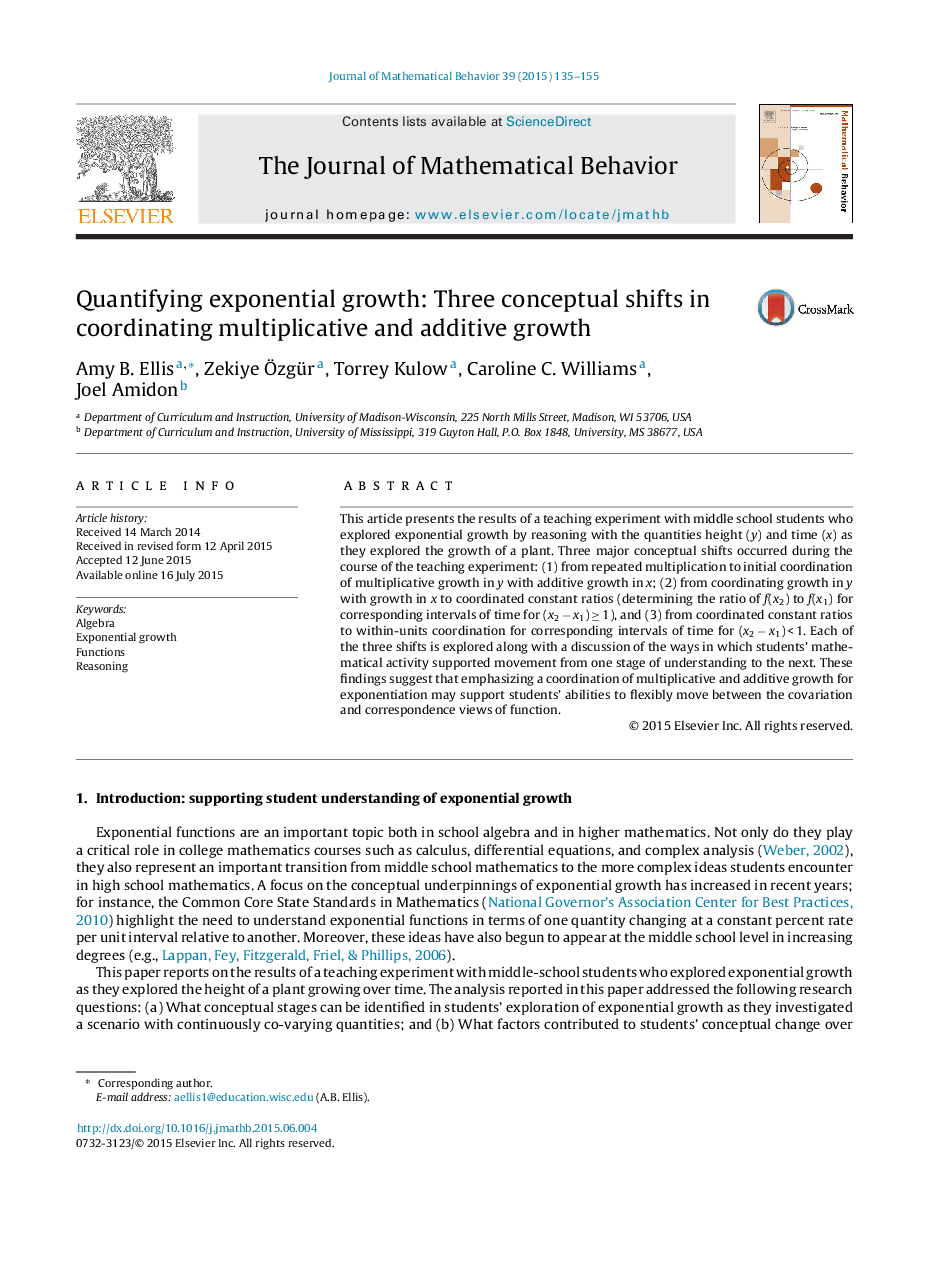| Article ID | Journal | Published Year | Pages | File Type |
|---|---|---|---|---|
| 360706 | The Journal of Mathematical Behavior | 2015 | 21 Pages |
•We present three conceptual shifts in learning about exponential growth.•Students developed constant ratios for y coordinated with additive change in x.•We offer a proof of concept that students can understand non-natural exponents.•Coordinating multiplicative and additive growth supports function understanding.
This article presents the results of a teaching experiment with middle school students who explored exponential growth by reasoning with the quantities height (y) and time (x) as they explored the growth of a plant. Three major conceptual shifts occurred during the course of the teaching experiment: (1) from repeated multiplication to initial coordination of multiplicative growth in y with additive growth in x; (2) from coordinating growth in y with growth in x to coordinated constant ratios (determining the ratio of f(x2) to f(x1) for corresponding intervals of time for (x2 − x1) ≥ 1), and (3) from coordinated constant ratios to within-units coordination for corresponding intervals of time for (x2 − x1) < 1. Each of the three shifts is explored along with a discussion of the ways in which students’ mathematical activity supported movement from one stage of understanding to the next. These findings suggest that emphasizing a coordination of multiplicative and additive growth for exponentiation may support students’ abilities to flexibly move between the covariation and correspondence views of function.
